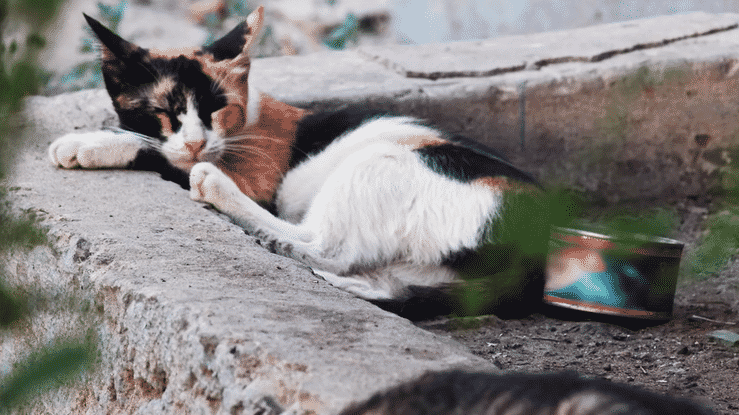
Jul 08, 2024 Australian Cats: Making a Difference
The January 2023 issue of WellBeing News included an article on the humane management of outdoor cats in Australian urban and periurban areas by the Australian Pet Welfare Foundation (APWF). The foundation was founded in 2011 by Dr. Jacquie Rand and three colleagues to advocate for pet welfare, provide evidence-based recommendations resolving human-animal conflicts, and support creating communities where the welfare of pets and people are promoted. Studies supported by the APWF (now raising around A$1 million a year) demonstrate the benefits of trap and sterilize programs for cats, people, and the local council if a sufficient portion of outdoor cats in urban areas had been processed through the trap and sterilization programs.
Despite the widespread illegality of trapping, neutering, and returning (TNR) of outdoor cats in Australia, the AWPF was granted permission in 2013 to implement and assess the impact of a TNR project on outdoor cat management in the community of Banyule, a suburb of Melbourne, Victoria. TNR is a method of humanely trapping feral cats, neutering them, and returning them to their original location. The success of this project, described in a paper published in May 2024, serves as a beacon of hope for the potential of such initiatives.
In 2013, a free, medium-intensity cat sterilization program was introduced in three lower socioeconomic target communities in Banyule, where the total human population is 13,445. These communities had high rates of cat complaint calls to the council. From 2015 to 2017, a low-intensity, city-wide sterilization program was conducted twice a year in April and August to coincide with the pre-and post-kitten seasons.
Between 2018 and 2021, low-intensity citywide sterilization programs continued through the year, supplemented by medium-intensity sterilization in the three targeted lower socioeconomic communities. Starting in 2018, cat trapping following a complaint was delayed by a week to facilitate a proactive approach to resolving nuisance cat issues.
In Victoria, each community council employs Animal Management Officers (AMOs) to enforce relevant state legislation and specific council by-laws pertaining to domestic animals. Following a call complaining about a cat or cats, an AMO lends a trap to the complainant or visits the property themselves and traps the animal(s). After trapping, a healthy, unidentified cat is maintained at the pound or an appropriate contracted facility for eight days. The cat will be rehomed or euthanized if it is not reclaimed during this period.
The Banyule project dramatically reduced the number of cats collected by AMOs or handed into the cat shelter by citizens. From fiscal year 2012/13 to 2020/21, the number of cats and kittens impounded in Banyule dropped from around 400 per annum to 134, resulting in a reduction in intake of around 66%. The cat euthanasia rate dropped by around 80%. Apart from the impressive decline in the number of cats and kittens impounded and euthanized. The project also found that when cats were sterilized, microchipped and returned to the relevant caregiver, the caregiver was now prepared to accept cat ownership and associated responsibility. Therefore, the project “found” homes for outdoor cats that were previously cared for but were not considered owned by a caregiver.
The APWF also found that it is essential to gain the support of the Animal Management Officers (AMOs) for this new approach to outdoor cat management. Animal control employees are viewed more as enforcers than as a source of help and support. AMOs who commit to this new approach to outdoor cat management, help establish trusting relations with existing cat caregivers and ensure the strategy’s long-term success. Unlike the standard outdoor cat management approach that more often than not results in the death of the trapped cats and that typically is associated with a steady increase in the number of cats impounded and euthanized, the new approach reduces cat impoundments and euthanasia. In Banyule, the council provided funding for cat sterilization. However, over the eight years of the project, the council spent A$77,940 to sterilize cats but saved an estimated A$440,660 in the costs of trapping and caring for nuisance cats.
The Banyule community cat project has demonstrated that switching to a sterilization program for unowned community cats benefits both cats and people. The APWF is now conducting camera trap surveys to determine if the Banyule approach also reduces threats to native wildlife. The organization has established similar projects in four suburbs around Brisbane, Queensland. Preliminary results indicate that the Brisbane projects are producing the same positive outcomes observed in Banyule.
The APWF is now contacting other urban centers in Victoria, New South Wales and Queensland to urge them to reconsider their approach to managing urban and peri-urban “unowned” cats.
The success of the APWF projects in Australia matches the successful approach involving outdoor cat sterilization conducted by Professor Julie Levy in Alachua County, Florida, home of the University of Florida College of Veterinary Medicine. Dr Levy’s team sterilized 60 cats per 1,000 people in the Alachua County target area. This intense sterilization program led to a 66% reduction in cat intake from the target area by the county shelter in just two years.
Millions of cats live in the Australian outback without human care, while an estimated 700,000 live in and around Australian urban areas. Research by Rand and her colleagues indicates that managing the population of cats living around human habitation is best achieved by engaging with humans who care for “unowned” cats. This involves earning their trust and offering free sterilization and microchipping services for cared-for but “unowned” cats. Communities providing such a service, including several suburbs around Brisbane, have seen a dramatic decrease in cat intake into local shelters and cat shelter euthanasia.
Successfully managing outdoor cats in Australia will require different approaches in different landscapes. The AWPF projects are adding to a growing body of academic literature identifying successful approaches that might be considered when managing outdoor cat populations.
Video credit: Stock-Enjoy, Shutterstock


